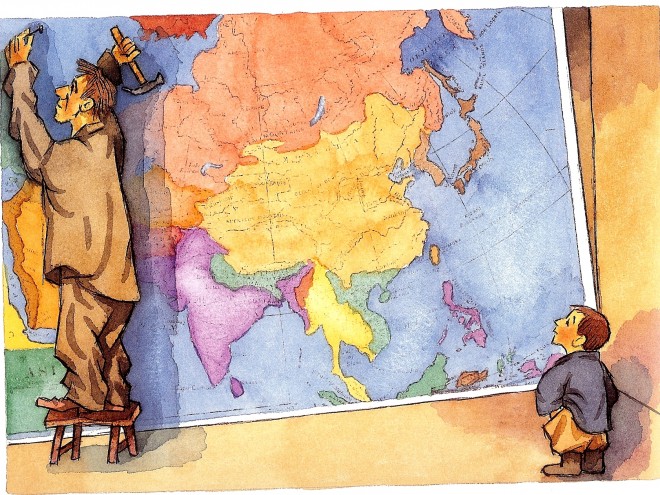American Jewish perceptions of Israel are often conflated with political and religious affiliation. The comics of Asaf Hanuka offer a radically different and more nuanced approach to the country and its people. Through his work, as Matt Reingold explains in this detailed study, Hanuka explores what it means to be Israeli, Jewish, and Mizrahi. At the same time, Hanuka speaks to universal themes, including the difficulties of parenting and the challenges of personal limitations. Largely free of jargon, Reingold’s study engages critically with the inconsistencies — including intentional ones — in Hanuka’s analyses of his country.
Most of the book focuses on two essential works inspired by Hanuka’s own life. In The Realist, a series of weekly cartoons that were featured in an Israeli business magazine from 2010 to 2021, Hanuka confronts the marginalized status of Jews from Arab countries and their alienation from the dominant Ashkenazi culture. The series also meditates on Hanuka’s family history and his self-image as an imperfect husband and father. Hanuka has a biting humor that doesn’t spare either his country or himself.
Reingold uses the term “fantastic autography” to categorize Hanuka’s melding of autobiography and fantasy. Some cartoons employ the technique of “mirroring,” with each half of the page depicting an opposite reality. In “Underworld,” an Israeli child plays happily with a new toy, while, in the lower half of the comic, child laborers produce the same toy under inhumane conditions in another part of the world. In “Who,” Hanuka illustrates stark divisions in Israeli society. He draws a face based on his own, adding payes and a kippah and tape over his mouth. The image suggests that he is a religious Jew, his piety an object of both compassion and cynicism: “I’m the silenced minority, the traditional inferiority, the Recycled whiner, the bitter comic book writer.” Another image shows Hanuka’s own tongue encircling his head like a serpent. The caption reads, “I’m a harasser for life, but only toward my wife. I’m an ardent father, I’m an absent father.” If Hanuka’s work sounds exhausting, it is deliberately so. At times, simplistic divisions between religious and secular Jews collapse, as when the artist alludes to his own sincere, if inconsistent, participation in rituals.
During 2020, Hanuka released a new series, The Jewish Arab. Juxtaposing his grandfather’s immigration to Israel from Kurdish Iraq with his own return home after studying art in France, Hanuka confronts the myths that simplify and distort Israel’s national narrative, at times equating the situation of Palestinians and Mizrahi Jews. He never questions Israel’s right to exist as a country, but he deplores what he sees as the forced adherence to one particular definition of being Jewish or Israeli. Reingold pointedly remarks that Hanuka’s view of Mandatory Palestine as a kind of “paradise lost” is idealized, and he concludes that Hanuka’s work represents a personal truth, not a complete picture of Israel’s history.
Asaf Hanuka’s work is an open book, not a closed one. Readers unfamiliar with this unique writer and artist will be drawn to his vision of the world.
Emily Schneider writes about literature, feminism, and culture for Tablet, The Forward, The Horn Book, and other publications, and writes about children’s books on her blog. She has a Ph.D. in Romance Languages and Literatures.



